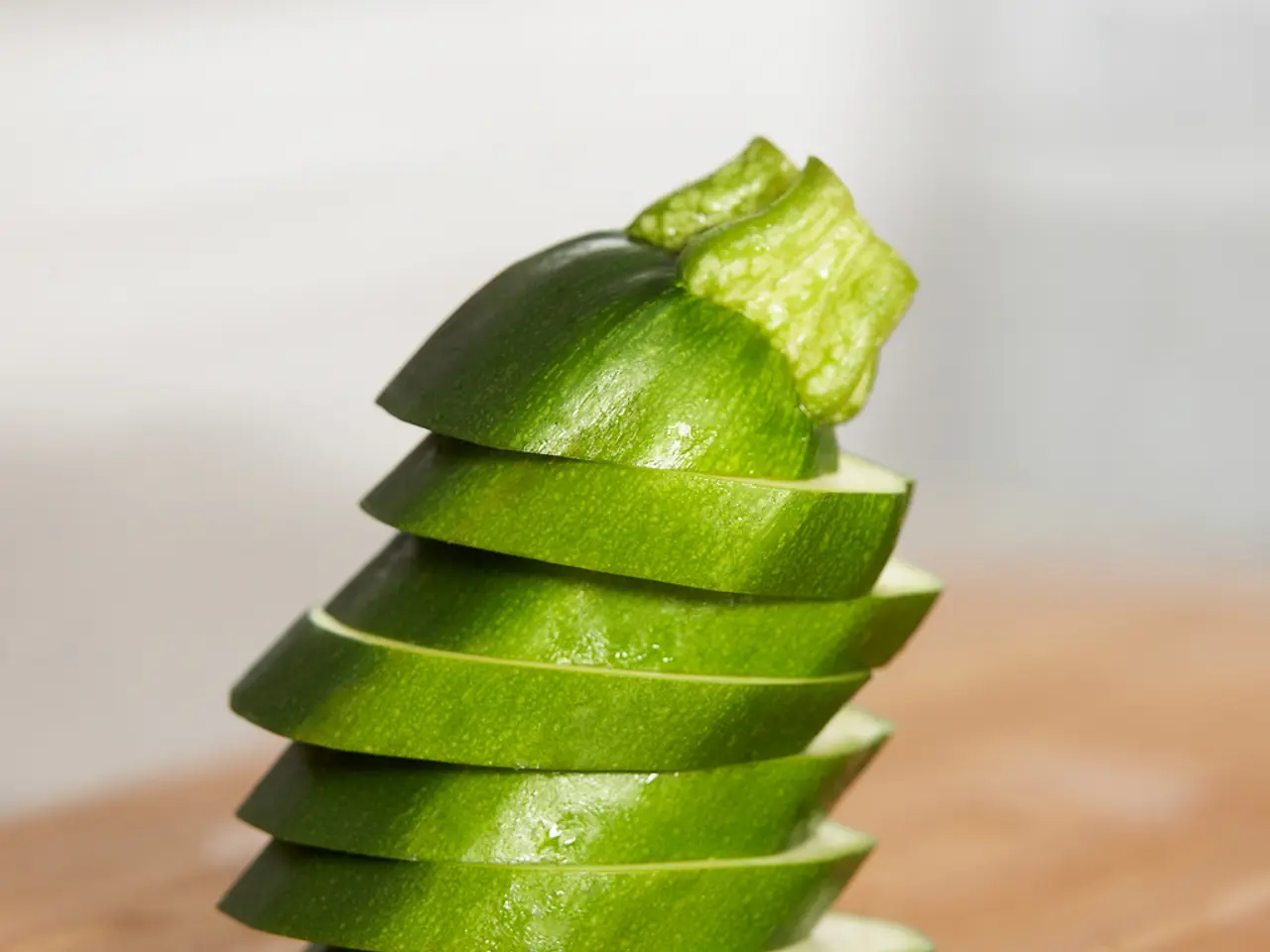Managing Common Cucumber Diseases and Pests
Troubleshooting Common Cucumber Plant Issues - Quick Solutions for Prompt Rehabilitation
Cultivating healthy cucumber plants requires vigilance against a variety of diseases and pests. Here's a guide to help you identify and control the most common issues affecting cucumber plants.
Identification of Common Cucumber Diseases and Pests
| Disease/Pest | Symptoms | Cause/Vector | |-----------------------|-----------------------------------------------------------------------------------------------------------|----------------------------------| | Powdery Mildew | White powdery spots on leaves and stems, spreading rapidly | Fungus (Erysiphe cichoracearum) | | Downy Mildew | Yellow spots on leaf upper surface, grayish/white fuzzy growth underneath | Fungus-like organism | | Bacterial Wilt | Leaves yellowing starting on one side, sticky white ooze from stems when cut | Bacteria (Erwinia tracheiphila) spread by cucumber beetles| | Anthracnose | Dark, sunken lesions on leaves, stems, fruits | Fungus (Colletotrichum lagenarium)| | Angular Leaf Spot | Angular, water-soaked spots on leaves, sometimes with yellow halos | Bacterial infection | | Mosaic Viruses | Mottled, yellow-green patches or streaks, distorted growth | Viral infection spread by aphids or beetles| | Root Knot Nematodes | Root galls, stunted growth | Nematodes (Meloidogyne spp.) | | Cucumber Beetles | Leaf feeding damage, vectors for bacterial wilt and mosaic viruses | Insect pest |
Control Measures
1. Cultural Practices:
- Space plants adequately to ensure good airflow and reduce leaf wetness, which helps prevent fungal diseases like powdery and downy mildew[1][4].
- Remove and destroy infected plant material promptly to reduce inoculum sources for diseases like anthracnose, angular leaf spot, and bacterial wilt[1].
- Rotate crops yearly with non-cucurbit plants to interrupt pest and disease life cycles, especially for nematodes and fungal pathogens[2][4].
- Use disease-resistant cucumber varieties when available[2].
2. Organic Treatments:
- For powdery mildew: Spray with baking soda solution (1 tablespoon baking soda per gallon water) or neem oil for controlling fungal growth[1].
- For downy mildew: Apply copper-based fungicides or homemade baking soda sprays regularly[1].
- For fungal and bacterial leaf spots: Use copper-based fungicides; remove infected leaves to reduce spread[1].
- No cure for bacterial wilt and mosaic virus; infected plants must be removed to prevent spread[1][3].
3. Chemical Controls:
- Apply fungicides specifically formulated for powdery mildew and downy mildew as per label instructions[1].
- Use insecticides to control cucumber beetles and aphids which spread bacterial wilt and mosaic viruses; target young nymphs for best efficacy[4].
- Rotate insecticides by mode of action to avoid resistance development in pests like cucumber beetle and Colorado potato beetle[4].
4. Pest Monitoring and Physical Control:
- Scout plants regularly for pest eggs, larvae, and adults, particularly under leaves[4].
- Hand-remove and destroy egg masses when practical[4].
- Consider sticky traps for early detection of pest populations[4].
- Control aphid populations to reduce viral disease transmission[3].
Summary Table of Identification and Control
| Disease/Pest | Identification Tips | Control Highlights | |--------------------|---------------------------------------------|----------------------------------------------------| | Powdery Mildew | White powdery coating on leaves | Baking soda spray, neem oil, fungicides | | Downy Mildew | Yellow spots, fuzzy undersides of leaves | Copper fungicides, baking soda spray, good airflow | | Bacterial Wilt | Yellowing leaves, sticky stem sap | Remove infected plants, control cucumber beetles | | Anthracnose | Dark lesions on leaves and stems | Remove infected parts, copper fungicides | | Angular Leaf Spot | Angular water-soaked spots | Sanitation and copper fungicide | | Mosaic Viruses | Mottled yellow/green patterns, distorted leaves | Remove infected plants, manage aphids/cucumber beetles | | Root Knot Nematode | Swollen roots, stunted growth | Crop rotation, soil fumigation (if needed) | | Cucumber Beetles | Leaf feeding damage, vectors disease | Scouting, insecticides, crop debris removal |
By combining visual diagnosis with integrated cultural, biological, and chemical control methods, you can effectively manage the most common cucumber diseases and pests[1][2][3][4]. Early detection, good sanitation, and pest monitoring are critical to preventing serious crop losses.
If you need more specific guidance on any particular disease or treatment product, I can provide further details. - Hand-pollinating cucumbers can help boost yields and involves using a small brush to transfer pollen from male to female flowers. - Cucumbers need about 1 inch (2.5cm) of water daily. - Cucumber plants can be affected by cucumber beetles, which are yellow-green with black markings and feed on leaves, stems, and flower buds. - Yellow cucumbers and leaves can indicate inadequate water, fertilizer, transplant shock, or insufficient light. - On cucumber plants, spider mites can cause reddish and yellow irregular areas on leaves and appear as tiny specks of "dirt" on a clean, white piece of paper. - Holes in cucumbers may be caused by pickleworms, which burrow into fruit and eat the succulent, moist flesh inside, expelling frass or waste out through the entry hole.
Incorporating home-and-garden practices such as growing cucumbers in a well-spaced setup for improved airflow, using disease-resistant cucumber varieties, prompt removal of infected plant materials, and yearly crop rotation, can contribute to a healthier cucumber lifestyle by minimizing the chances of the common diseases like powdery mildew and anthracnose. Regular gardening tasks like sanitation, scouting for pests, and monitoring pest populations can further protect the garden from cucumber beetles and other potential threats.




